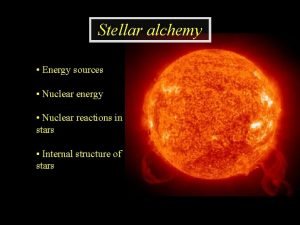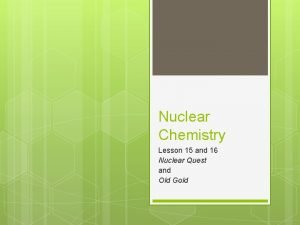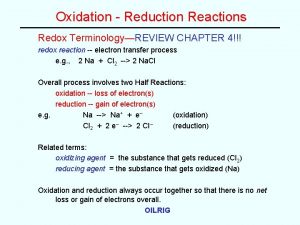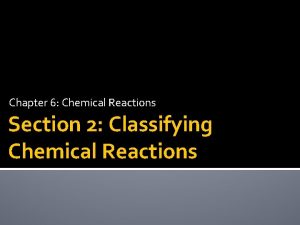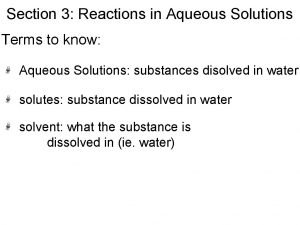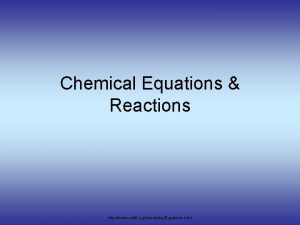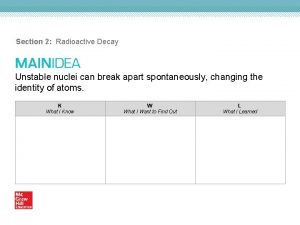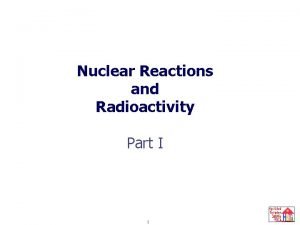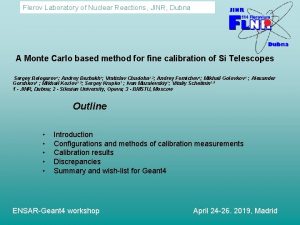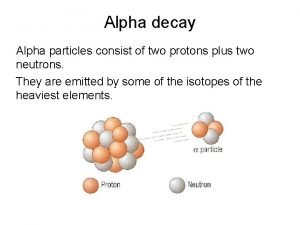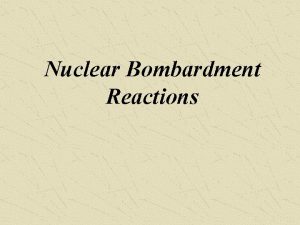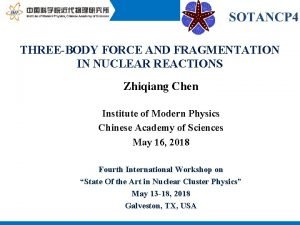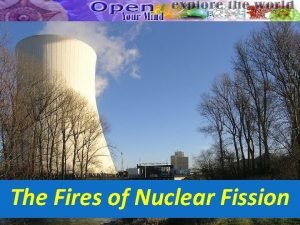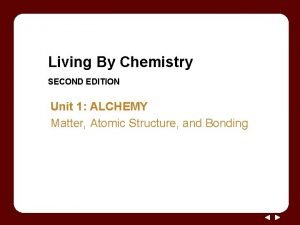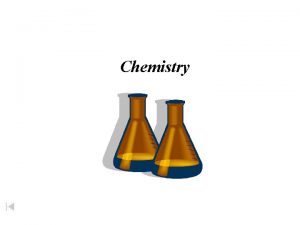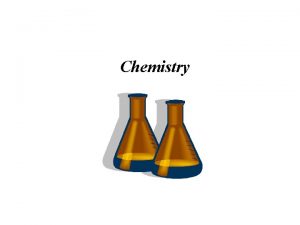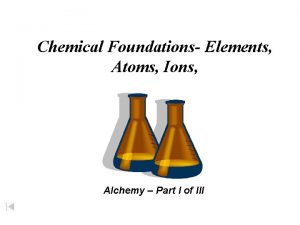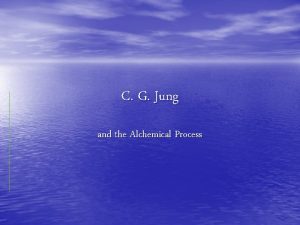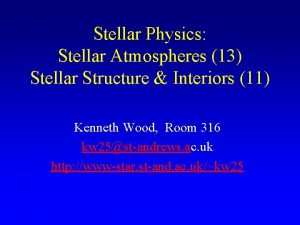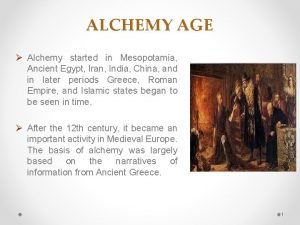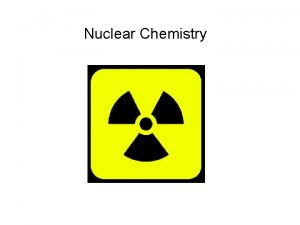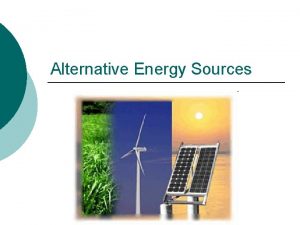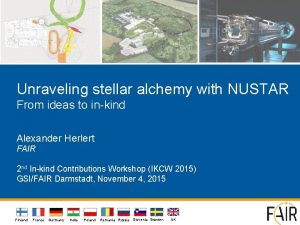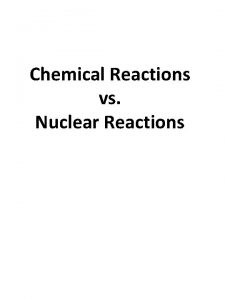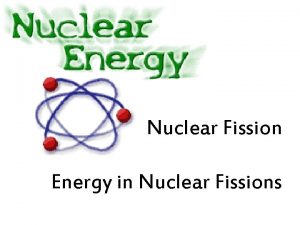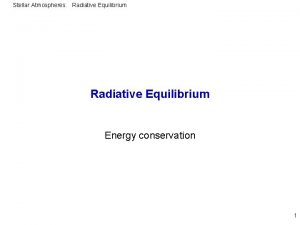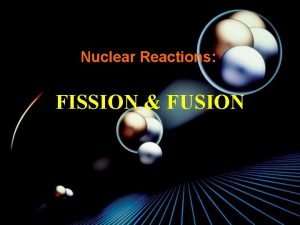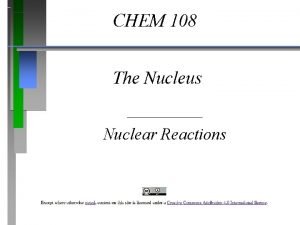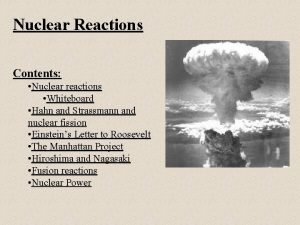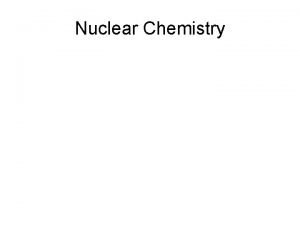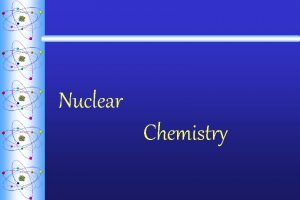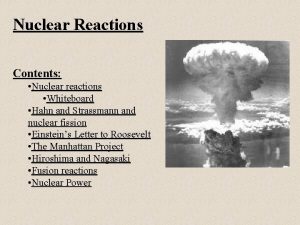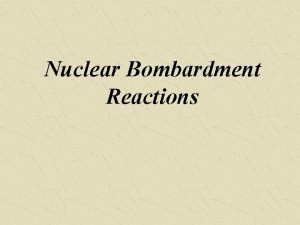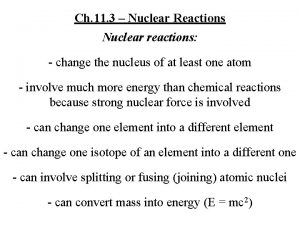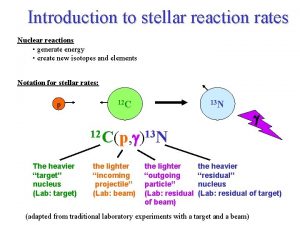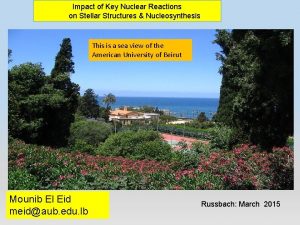Stellar alchemy Energy sources Nuclear energy Nuclear reactions



























- Slides: 27

Stellar alchemy • Energy sources • Nuclear energy • Nuclear reactions in stars • Internal structure of stars

Energy sources Age of the Sun Solar luminosity ~ 4 × 1026 W All electric plants together ~ 2 × 1012 W Conservation of energy Hermann von Helmholtz → search for the solar energy source (1860 s) William Thomson, Lord Kelvin

Energy sources - 2 Chemical energy M ~ 2 × 1030 kg If Sun made of coal → lifetime ~ 5000 ans ± compatible with Bible (Genesis ~ 4000 B. C. ) → But Darwin’s theory of species evolution through natural selection requires at least hundreds of millions of years → search for other energy sources Charles Darwin

Energy sources - 3 Gravitational energy Contraction of the Sun: year requires a few dozen meters per Contraction from the orbit of Mercury to the actual radius → age ~ 30 millions years → hardly compatible with evolution of species → Kelvin criticizes Darwin’s theory End of the Century: geologists estimate age of Earth to be at least 700 millions years → gravitational contraction insufficient

Energy sources - 4 Mass – energy equivalence 1905: Einstein discovers the equivalence of mass and energy → potential age reaches several billion years → energy stock amply enough → no more age problem But new question: by which mechanism do the Sun (and other stars) transform mass into energy? Albert Einstein

Nuclear energy The atomic nucleus : atom with a nucleus made of Z protons and (A−Z) neutrons Z = atomic number (determines type of atom and chemical properties) A = mass number = number of nucleons (determines isotope) Ex: : main isotope of lithium (3 p, 4 n) Protons: positive electrical charge Neutrons: no electrical charge → electrostatic repulsion between protons Nucleons bound by strong nuclear force (very intense but short range)

Nuclear energy - 2 Mass defect Mass of nucleus < sum of masses of nucleons Difference = mass defect ↔ binding energy: Δm = ΔE/c 2 Binding energy per nucleus: • increases from 1 H to 56 Fe • decreases beyond 56 Fe Energy release by: ΔE/A 56 Fe • fission of heavy nuclei • fusion of light nuclei (accompanied by transmutation of neutrons into protons) 1 H A

Nuclear energy - 3 Solar lifetime M ≈ 2 × 1030 kg Composed essentially of hydrogen 1 H (~90% in number of atoms) Nuclear fusion: 4 1 H → 4 He + energy MHe = 3. 9726 MH → ΔM = 0. 0274 / 4 per 1 H nucleus → ΔE ≈ 6 × 1014 J/kg The Sun is able to convert ~10% of its hydrogen into helium: → ΔE ≈ 0. 1 × 6 × 1014 × 2 × 1030 ≈ 1044 J → Δt ≈ ΔE / L ≈ 1044 / 4 × 1026 ≈ 3 × 1017 s ≈ 10 billion years

Nuclear energy - 3 Stability of nuclei A given atom can have several isotopes Stable isotopes have a number of neutrons: • ≈ equal to the number of protons (light nuclei): N = A−Z ≈ Z • in excess of the number of protons (heavy nuclei): N = A−Z > Z They follow the valley of stability in the N, Z diagram Valley of stability

Nuclear energy - 4 Natural radioactivity 1896: Becquerel fortuitously discovers natural radioactivity Several processes are identified: β− process corresponds to the emission of an e− by the nucleus, accompanied by transmutation of a neutron into a proton It concerns isotopes above the valley of stability (excess of neutrons) β+ process corresponds to the emission of a e+ (positon) by the nucleus (isotopes with excess of protons) Henri Becquerel

Nuclear energy - 5 Natural radioactivity The α process corresponds to the emission of a helium 4 nucleus The remaining nucleus is generally left in an excited state It gets back to the fundamental state, of minimum energy, by emitting a high energy photon (γ ray) Marie Curie

Nuclear reactions in stars The proton–proton chain The simultaneous encounter of 4 protons is highly improbable → fusion of hydrogen into helium proceeds by steps (1) 1 H + 1 H → 2 H + e+ + ν ν = neutrino • chargeless particle (and massless? ) • necessary to ensure conservation of energy and momentum (Δt ~ 109 years)

Nuclear reactions in stars - 2 The proton–proton chain One could have: 2 H + 2 H → 4 He + γ But 1 H is much more numerous than 2 H and the dominant reaction is (2) 2 H + 1 H → 3 He + γ (Δt ~ 1 s) One could have: 3 He + 1 H → 4 He + e+ +… but it does not work (3) 3 He + 3 He → 6 Be (Δt ~ 106 years) (3′) 6 Be → 4 He + 2 1 H The reaction rate is dominated by the slowest step, here (1)

Nuclear reactions in stars - 3 The proton–proton chain The pp chain needs a temperature T > 107 K in order for protons to be able to overcome the coulombian repulsion and fuse This is eased by a quantum effect: the tunnel effect (wavefunction → nonzero probability to cross a potential barrier) The pp chain is the dominant reaction in the solar core (T ~ 15 × 106 K) U coulombian repulsion (1/r) E 0 It has some variants (pp 2 and pp 3) that differ in the last qteps strong interaction r

Nuclear reactions in stars - 4 The CNO cycle At temperatures T > 15 × 106 K, hydrogen can fuse into helium following a reaction cycle that uses carbon nuclei already present in the star (products of preceding generations) 12 C + 1 H → 13 N + γ 13 N → 13 C + e+ + ν 13 C + 1 H → 14 N + γ 14 N + 1 H → 15 O + γ 15 O → 15 N + e+ + ν 15 N + 1 H → 12 C + 4 He (≈ 10% of solar energy)

Nuclear reactions in stars - 5 The triple alpha process Fusion of heavier nuclei requires higher temperatures to overcome the Coulomb repulsive force → core of more massive stars If T > 108 K: fusion of helium into carbon 4 He 8 Be + 4 He → 8 Be + γ is highly unstable: 8 Be → 4 He + 4 He in 10− 16 s However, from time to time, it will collide before disintegrating 8 Be + 4 He → 12 C + γ → production of carbon, which is the basis of life on Earth

Nuclear reactions in stars - 6 Alpha captures by carbon and oxygen At temperatures allowing fusion of helium into carbon, carbon nuclei can also capture an α particle: 12 C + 4 He → 16 O + γ Oxygen itself can also capture an α particle: 16 O + 4 He → 20 Ne + γ As Z increases, higher and higher temperatures are necessary to overcome the Coulomb barrier In stars similar to the Sun, nuclear fusion stops here In stars of more than 8 M , additional reactions follow

Nuclear reactions in stars - 7 Combustion of carbon and oxygen If T ~ 6 × 108 K: 12 C + 12 C → 20 Ne + 4 He 12 C + 12 C → 23 Na + 1 H 12 C + 12 C → 24 Mg + γ + other reactions, some of them endothermal If T > 109 K: 16 O + 16 O → 28 Si + 4 He 16 O + 16 O → 31 P + 1 H 16 O + 16 O → 31 S + n + other reactions, some of them endothermal

Nuclear reactions in stars - 8 Combustion of silicon If T > 3 × 109 K: 28 Si + 4 He … → 56 Fe = most stable nucleus → the star cannot produce energy by fusion of Fe with other nuclei → reactions producing elements heavier than iron participate to nucleosynthesis but not to energy production

Nuclear reactions in stars - 9 Nucleosyntheis of heavy elements Some of the previous reactions produce neutrons Those neutrons can be captured by nuclei to form heavier isotopes If these isotopes are unstable, they transmute into the following element by β− disintegration or: etc… These neutron captures form the basis of the production of all chemical elements heavier than iron

Nuclear reactions in stars - 10 Abundances of chemical elements Nuclear reactions in stars are responsible for the production of the vast majority of chemical elements heavier than hydrogen and helium (+ Li, Be, B) → starting from carbon The chemical composition of the primitive solar system can be determined by the analysis of some meteorites as well as of the solar spectrum It is representative of what is usually found in the Universe (cosmic abundances) within a common scale factor for carbon and heavier elements This factor is called metallicity

Nuclear reactions in stars - 11 Brown dwarfs If M < 0. 08 M and M > 0. 013 M = 13 MJup → the core temperature never reaches the value required for hydrogen fusion → gravitational contraction until R ~ RJup Tsurf ~ 1000 K • Brief episode of deuterium fusion (allows to define the limit between brown dwarfs and planets) • gradual cooling → L ~ 10− 6 L → very hard to detect First detection in 1994: Gliese 229 B, double system with a main sequence star

Internal structure of stars Nuclear reactions in the stellar cores (for the Sun, this core extends over 1/4 of the radius (1. 6% of the volume) Photosphere Chromosphere Convective zone Core Radiative zone Internal structure of the Sun

Internal structure of stars - 2 Stability of the stellar nuclear reactor Most stars radiate in a very stable way because their energy production is `autoregulated´ If energy production is reduced → central pressure is reduced → the core contracts because of gravity → pressure increases → temperature increases → energy production increases And conversely… → energy production is stabilised at the right level to prevent gravitational collapse

Internal structure of stars - 3 Energy transport 3 mechanisms: • conduction: not efficient in gases → marginal in most stars • radiation: the more transparent matter is, the more efficent is the energy transport by photons; in stars, numerous absorptions – re-emissions • convection: when matter is too opaque, energy accumulates at the bottom of the opaque zone → appearance of convection currents, energy is transported by matter in motion

Internal structure of stars - 4 Internal structure How can we determine the physical state (temperature, pressure, …) in the stellar interiors? A star is a rather simple structure (in 1 st approximation) = sphere of gas in equilibrium under its own gravity → solve a system of equations: • hydrostatic equilibrium: pressure ↔ weight of upper layers • mass conservation • energy production • transport (and conservation) of energy • equation of state (ex: perfect gas)

Internal structure of stars - 5 Tests of models Compare predictions with observations (surface conditions) • HR diagrams of clusters (assemblies of stars with same age and same chemical composition) • detection of neutrinos (very low interaction with matter → come directly from the core) • helio and asteroseismology (study of oscillations)
 Stellar alchemy
Stellar alchemy Lesson 15 nuclear quest nuclear reactions
Lesson 15 nuclear quest nuclear reactions Section 2 classifying chemical reactions
Section 2 classifying chemical reactions Oxidation half reaction
Oxidation half reaction Chemical reactions section 2 classifying chemical reactions
Chemical reactions section 2 classifying chemical reactions Chemical reactions section 3 reactions in aqueous solutions
Chemical reactions section 3 reactions in aqueous solutions Unit 5 chemical reactions answers
Unit 5 chemical reactions answers Print sources and web sources
Print sources and web sources Importance of water resource management
Importance of water resource management Nuclear decays and reactions section 2
Nuclear decays and reactions section 2 Nuclear fission equation
Nuclear fission equation Natural transmutation equation
Natural transmutation equation Balancing nuclear reactions
Balancing nuclear reactions Activity of radioactive sample
Activity of radioactive sample Flerov laboratory of nuclear reactions
Flerov laboratory of nuclear reactions Uranium alpha decay
Uranium alpha decay Two types of nuclear reactions
Two types of nuclear reactions Bombardment reactions
Bombardment reactions Nuclear reactions are at
Nuclear reactions are at Key terms radioactivity and nuclear reactions
Key terms radioactivity and nuclear reactions Fisión nuclear vs fision nuclear
Fisión nuclear vs fision nuclear Lesson 20 getting connected ionic compounds
Lesson 20 getting connected ionic compounds What is alchemy in chemistry
What is alchemy in chemistry Chemist and alchemist
Chemist and alchemist Alchemy silver symbol
Alchemy silver symbol Carl jung alchemy
Carl jung alchemy Alchemy compute units
Alchemy compute units Daoist alchemy
Daoist alchemy
